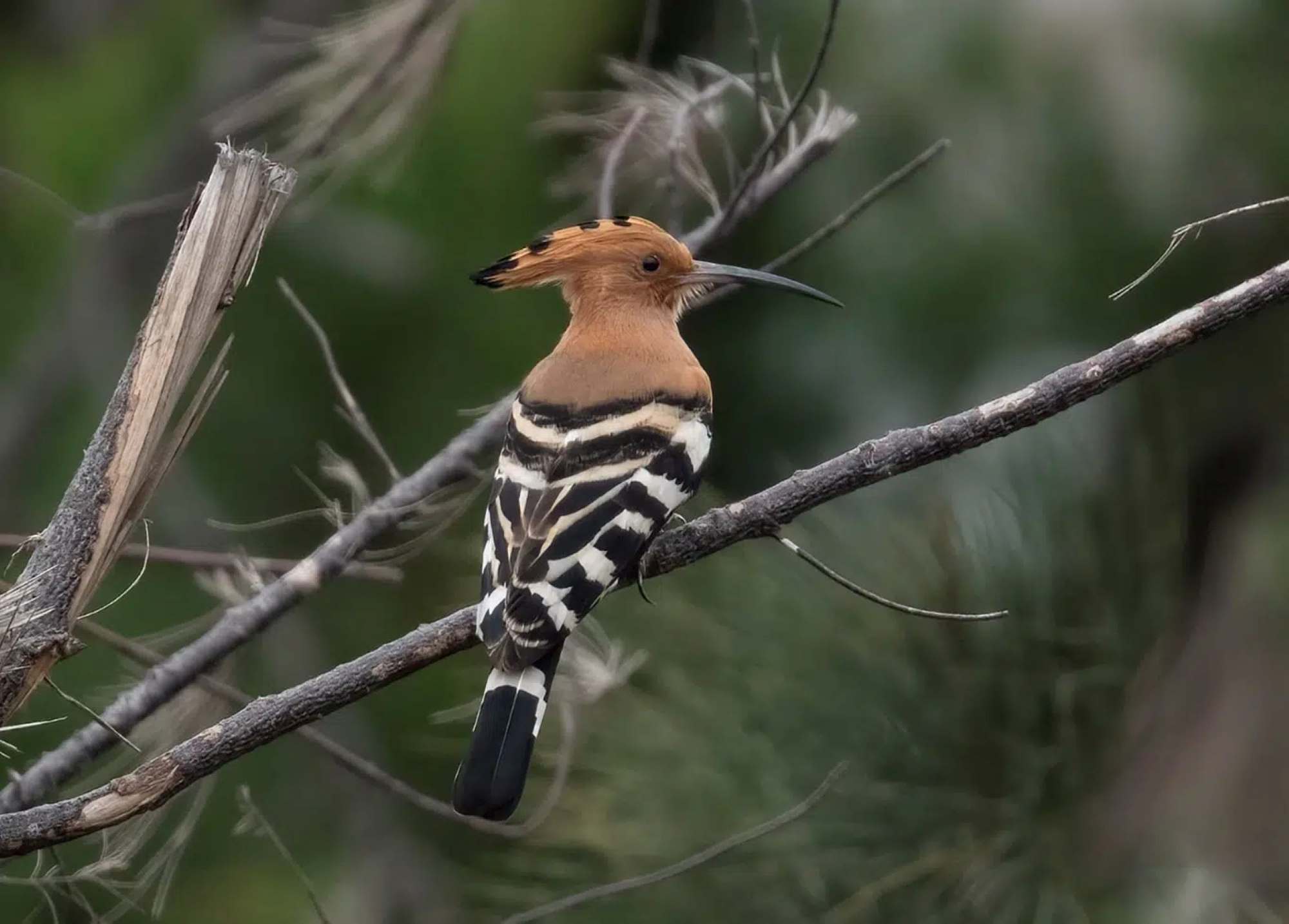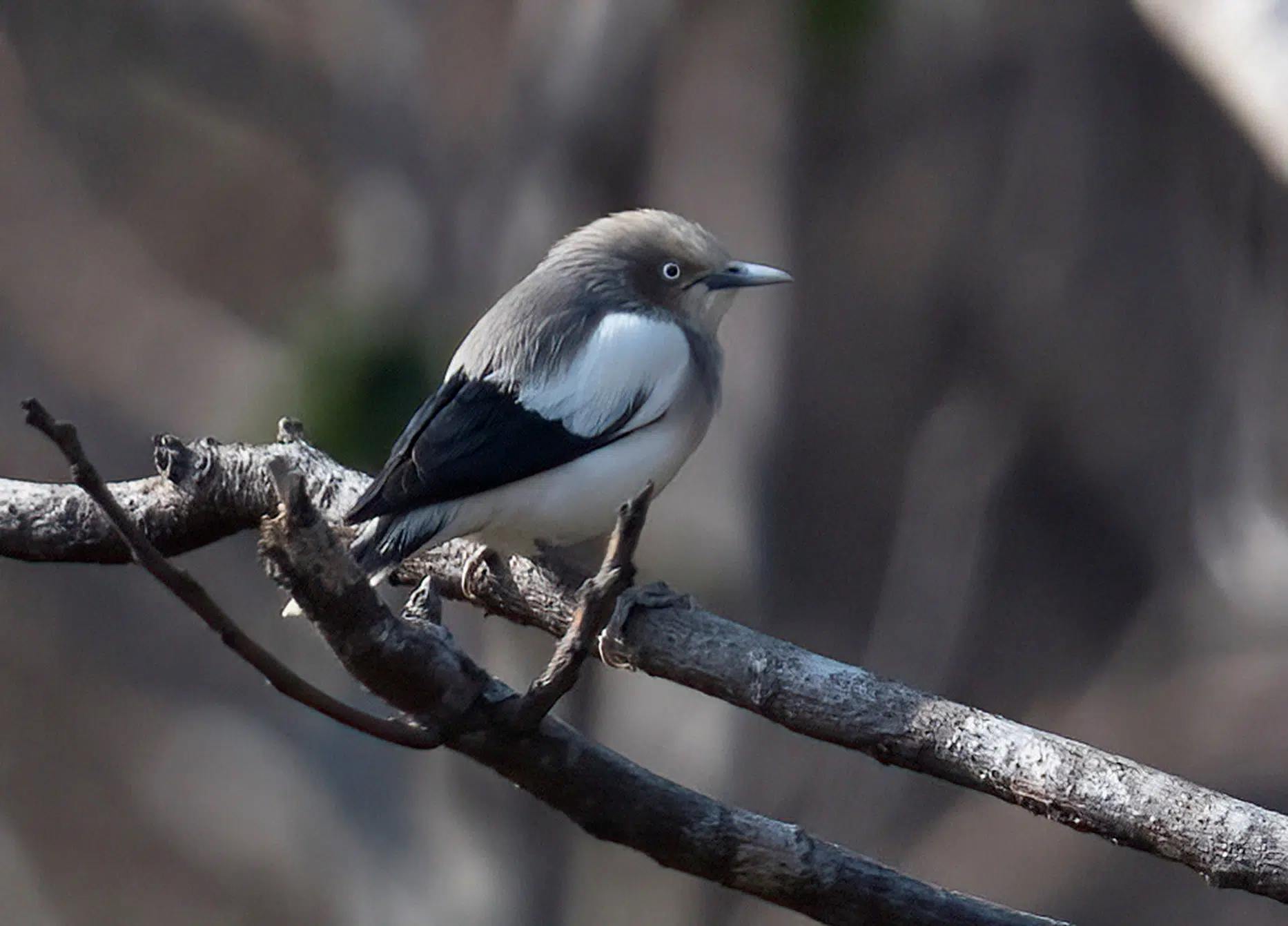
White-bellied Sandpiper. Photo: Bai Tu Long National Park Management Board
According to information from the Bai Tu Long National Park Management Board, from November 2024 to June 2025, 4 surveys within the framework of the project "Research on species composition and propose solutions to conserve the bird fauna of Bai Tu Long National Park, Quang Ninh province" led by MSc. Pham Hong Phuong, Institute of Tropical Ecology, Vietnam - Russia Tropical Center were deployed on large islands such as Ba Mun, Tra Ngo, Sau, Minh Chau and buffer zones such as Quan Lan and Ban Sen.
Preliminary research results show that Bai Tu Long National Park has 93 species of forest birds, belonging to 37 families and 8 orders, of which 90 species have been photographed.
This richness far exceeds previous figures, adding 27 new species to the National Park's catalogue.
The Passeriformes are dominant with 71 species, representing 75.3% of the total species, reflecting the characteristics of tropical forest and coastal island habitats. The Muscicapidae family has the largest number of species, with 17 species, including many migratory species from the Palearctic region. Other families with significant numbers of species are Columbidae with 7 species, Pycnonotidae with 6 species, Accipitridae and Turdidae with 5 species each.

Hoopoe Bird. Photo: Bai Tu Long National Park Management Board
In particular, the presence of the Oriental Pied Hornbill is an important indicator that the forest ecosystem here still retains a relatively intact structure. In addition, the study also recorded a number of rare species with high conservation value, such as: Burmese Pied Buzzard Spilornis cheela, Black-breasted Thrush Turdus dissimilis, and especially the Yellow-breasted Pied Hornbill Emberiza aureola - a species currently in the status of globally threatened according to the IUCN classification.
These findings demonstrate that Bai Tu Long is not only a habitat for many resident species but also an important stopover on the migratory route of international birds. The presence of birds of prey at high trophic levels further confirms the balance of the ecosystem. The addition of species compared to previous studies also reflects the huge biodiversity potential of the area, which needs to be further surveyed and researched in the future.

White-shouldered starling. Photo: Bai Tu Long National Park Management Board
To expand and collect additional research results, the team plans to continue surveys in Bai Tu Long National Park during the migratory bird season from August to November, promising to bring many important records of rare bird species in the area.
Source: https://laodong.vn/xa-hoi/phat-hien-them-27-loai-chim-moi-o-vuon-quoc-gia-bai-tu-long-1582645.ldo


![[Photo] The road connecting Dong Nai with Ho Chi Minh City is still unfinished after 5 years of construction.](https://vphoto.vietnam.vn/thumb/1200x675/vietnam/resource/IMAGE/2025/11/04/1762241675985_ndo_br_dji-20251104104418-0635-d-resize-1295-jpg.webp)
![[Photo] Panorama of the Patriotic Emulation Congress of Nhan Dan Newspaper for the period 2025-2030](https://vphoto.vietnam.vn/thumb/1200x675/vietnam/resource/IMAGE/2025/11/04/1762252775462_ndo_br_dhthiduayeuncbaond-6125-jpg.webp)
![[Photo] Ca Mau "struggling" to cope with the highest tide of the year, forecast to exceed alert level 3](https://vphoto.vietnam.vn/thumb/1200x675/vietnam/resource/IMAGE/2025/11/04/1762235371445_ndo_br_trieu-cuong-2-6486-jpg.webp)


![[Photo] Ho Chi Minh City Youth Take Action for a Cleaner Environment](https://vphoto.vietnam.vn/thumb/1200x675/vietnam/resource/IMAGE/2025/11/04/1762233574890_550816358-1108586934787014-6430522970717297480-n-1-jpg.webp)































































































Comment (0)